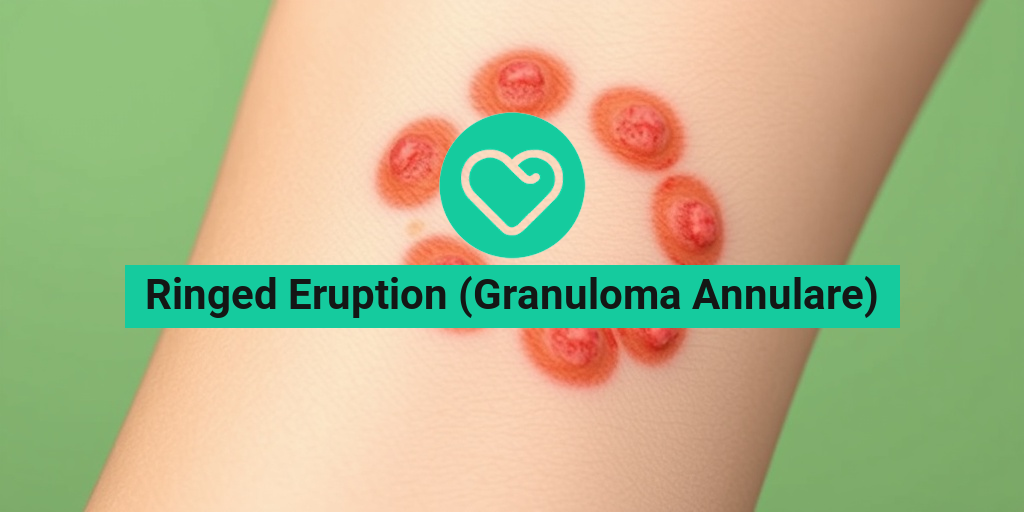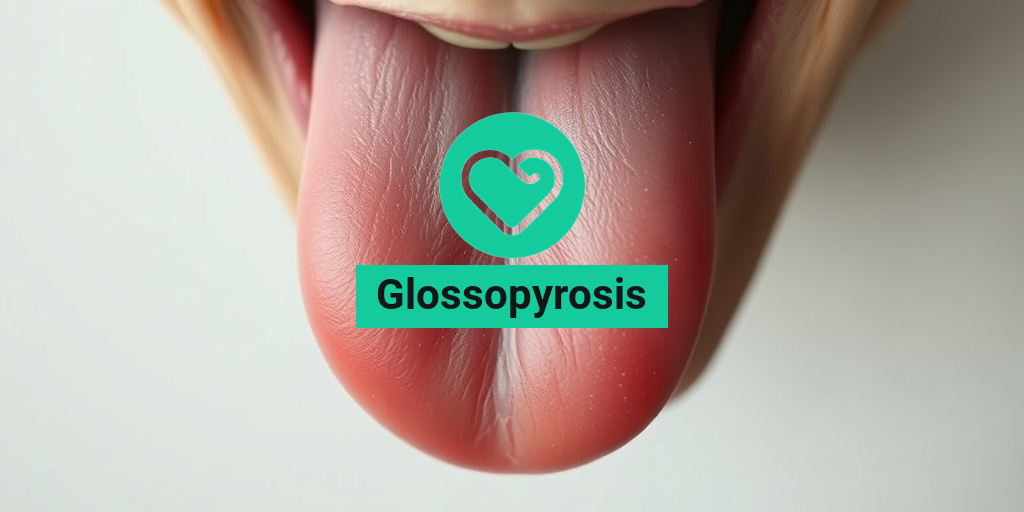What Is Guenther Porphyria?
Guenther porphyria is a rare and inherited disorder that affects the production of heme, a vital molecule in the body. It is a type of porphyria, a group of disorders characterized by abnormalities in the production of heme, which is essential for the functioning of various enzymes and proteins in the body.
Causes and Inheritance
Guenther porphyria is caused by a deficiency of the enzyme uroporphyrinogen III synthase, which is necessary for the production of heme. This deficiency leads to the accumulation of toxic intermediates in the heme biosynthetic pathway, causing a range of symptoms and complications. The disorder is inherited in an autosomal recessive pattern, meaning that a person must inherit two copies of the mutated gene (one from each parent) to develop the condition.
Prevalence and Diagnosis
Guenther porphyria is an extremely rare disorder, with only a few reported cases worldwide. Diagnosis is often challenging due to the rarity of the condition and the lack of awareness among healthcare professionals. A diagnosis of Guenther porphyria is typically made through a combination of clinical evaluation, laboratory tests, and genetic analysis.
If you or a loved one is experiencing symptoms that may be related to Guenther porphyria, it’s essential to consult with a healthcare professional who has experience in diagnosing and managing rare genetic disorders. You can also seek guidance from reputable online resources, such as Yesil Health AI, which provides evidence-based health information and support.
Guenther Porphyria Symptoms
The symptoms of Guenther porphyria can vary in severity and may appear at any age, from infancy to adulthood. Some common symptoms include:
Cutaneous Symptoms
Sensitivity to sunlight is a hallmark symptom of Guenther porphyria, leading to severe blistering and scarring of the skin. Other cutaneous symptoms may include:
- Increased hair growth
- Darkening of the skin
- Blisters and skin lesions
Neurological Symptoms
In addition to cutaneous symptoms, Guenther porphyria can also cause a range of neurological symptoms, including:
- Seizures
- Muscle weakness
- Numbness or tingling in the hands and feet
- Abnormalities in mental status
Other Symptoms
Other symptoms of Guenther porphyria may include:
- Anemia
- Abnormal liver function
- Kidney damage
- Respiratory problems
It’s essential to seek medical attention if you or a loved one is experiencing any of these symptoms. Early diagnosis and treatment can help manage the condition and prevent complications. 💊

Guenther Porphyria Causes and Risk Factors
Guenther porphyria, a rare and inherited disorder, affects the production of heme, a vital molecule in the body. While the exact causes of Guenther porphyria are still not fully understood, researchers have identified certain risk factors that contribute to its development.
Genetic Mutation
The primary cause of Guenther porphyria is a genetic mutation in the HMBS gene, which codes for the enzyme hydroxymethylbilane synthase. This enzyme plays a crucial role in the production of heme. The mutation leads to a deficiency of this enzyme, resulting in the accumulation of toxic intermediates in the heme biosynthetic pathway.
Inherited Pattern
Guenther porphyria follows an autosomal recessive pattern of inheritance. This means that a person needs to inherit two copies of the mutated HMBS gene, one from each parent, to develop the condition. Carriers of the mutated gene, who have one copy of the gene, are generally asymptomatic but can pass it on to their offspring.
Other Risk Factors
In addition to the genetic mutation, certain environmental and hormonal factors can trigger the onset of Guenther porphyria symptoms. These include:
- Hormonal changes: Fluctuations in hormone levels, such as those experienced during puberty, menstruation, or pregnancy, can trigger symptoms.
- Drugs and medications: Certain drugs, like barbiturates, sulfonamides, and estrogen, can induce symptoms by increasing the demand for heme production.
- Infections: Bacterial or viral infections can trigger an acute attack of Guenther porphyria.
- Dietary factors: A diet low in carbohydrates and high in fat can exacerbate symptoms.
While these risk factors can contribute to the development of Guenther porphyria, it’s essential to note that not everyone with a family history of the condition will develop symptoms. If you have a family history of Guenther porphyria, it’s crucial to consult with a healthcare professional for genetic counseling and testing. 💡
Guenther Porphyria Diagnosis
Diagnosing Guenther porphyria can be challenging due to its rarity and the variability of symptoms. A comprehensive diagnostic approach involves a combination of clinical evaluation, laboratory tests, and genetic analysis.
Clinical Evaluation
A healthcare professional will typically start by taking a detailed medical history and performing a physical examination to identify any signs of Guenther porphyria, such as:
- Abdominal pain
- Nausea and vomiting
- Seizures
- Mental health changes
Laboratory Tests
Laboratory tests can help identify the underlying biochemical abnormalities characteristic of Guenther porphyria. These may include:
- Urinary porphobilinogen (PBG) and delta-aminolevulinic acid (ALA) levels: Elevated levels of these compounds in the urine can indicate a porphyria disorder.
- Complete Blood Count (CBC): A CBC can help identify anemia, which is common in Guenther porphyria.
- Liver function tests: These tests can help assess liver damage, which can occur in Guenther porphyria.
Genetic Analysis
Genetic testing can confirm the diagnosis of Guenther porphyria by identifying the HMBS gene mutation. This involves analyzing a sample of DNA from blood or saliva.
A definitive diagnosis of Guenther porphyria requires a combination of clinical evaluation, laboratory tests, and genetic analysis. If you suspect you or a family member may have Guenther porphyria, consult with a healthcare professional for proper evaluation and diagnosis. 🏥

Guenther Porphyria Treatment
Guenther porphyria is a rare genetic disorder that affects the production of heme, a vital molecule in the body. While there is no cure for Guenther porphyria, various treatment options are available to manage its symptoms and improve the quality of life for affected individuals. In this section, we’ll delve into the different treatment approaches for Guenther porphyria.
Pharmacological Interventions
Medications play a crucial role in managing the symptoms of Guenther porphyria. The primary goal of pharmacological interventions is to reduce the accumulation of toxic intermediates in the heme biosynthetic pathway. Some of the commonly used medications include:
- Heme arginate: This medication helps to reduce the accumulation of toxic intermediates and alleviate symptoms such as abdominal pain and neuropathy.
- Heme infusion: Heme infusion is used to treat acute attacks of Guenther porphyria. It helps to replenish the body’s heme stores and reduce symptoms.
- Pain management medications: Medications such as gabapentin and pregabalin are used to manage neuropathic pain associated with Guenther porphyria.
Lifestyle Modifications
In addition to pharmacological interventions, lifestyle modifications play a vital role in managing Guenther porphyria. Some of the recommended lifestyle changes include:
- Avoiding triggers: Identifying and avoiding triggers that can exacerbate symptoms, such as certain medications, hormonal changes, and stress.
- Dietary changes: Following a diet that is low in carbohydrates and high in protein can help to reduce the accumulation of toxic intermediates.
- Avoiding sunlight: Avoiding direct sunlight and using protective measures such as sunscreen and clothing can help to reduce the risk of skin damage.
Guenther Porphyria Home Care
While medical interventions are essential for managing Guenther porphyria, home care plays a vital role in alleviating symptoms and improving the quality of life for affected individuals. Here are some home care tips for Guenther porphyria:
Managing Pain
Pain management is a crucial aspect of Guenther porphyria home care. Some of the ways to manage pain at home include:
- Heat therapy: Applying heat to the affected area can help to relieve pain and discomfort. 🌡️
- Rest: Getting adequate rest and avoiding strenuous activities can help to reduce pain and fatigue.
- Relaxation techniques: Practicing relaxation techniques such as meditation and deep breathing can help to reduce stress and anxiety.
Wound Care
Individuals with Guenther porphyria are at risk of developing skin lesions and wounds. Proper wound care is essential to prevent infection and promote healing. Some of the wound care tips include:
- Keeping the wound clean: Cleaning the wound regularly with saline solution can help to prevent infection.
- Applying topical creams: Applying topical creams such as aloe vera can help to promote healing and reduce inflammation.
- Protecting the wound from sunlight: Protecting the wound from direct sunlight can help to reduce the risk of further skin damage.
By incorporating these treatment options and home care tips into their daily routine, individuals with Guenther porphyria can better manage their symptoms and improve their quality of life. 💊

Guenther Porphyria Outlook
Guenther porphyria, a rare and debilitating genetic disorder, affects approximately 1 in 200,000 people worldwide. While there is no cure for this condition, understanding the outlook and prognosis can help individuals and families better navigate the challenges that come with it.
Life Expectancy
Historically, Guenther porphyria was considered a severe and life-threatening condition, with many patients not surviving beyond childhood. However, with advancements in medical care and treatment, the life expectancy of individuals with Guenther porphyria has significantly improved. Today, with proper management and care, many people with Guenther porphyria can live into their 40s, 50s, and even 60s.
Symptoms and Complications
Despite the improved life expectancy, Guenther porphyria can still cause a range of symptoms and complications that affect quality of life. These may include:
- Skin symptoms: blistering, scarring, and increased sensitivity to sunlight
- Neurological symptoms: seizures, muscle weakness, and numbness or tingling in the hands and feet
- Gastrointestinal symptoms: abdominal pain, nausea, and vomiting
- Cardiovascular symptoms: high blood pressure, heart palpitations, and cardiac arrhythmias
It’s essential for individuals with Guenther porphyria to work closely with their healthcare providers to manage these symptoms and prevent complications.
Treatment and Management
While there is no cure for Guenther porphyria, various treatments can help alleviate symptoms and improve quality of life. These may include:
- Medications: to manage pain, seizures, and other symptoms
- Photoprotection: avoiding sunlight, using protective clothing, and applying sunscreen
- Dietary changes: avoiding triggers, such as certain medications, and following a balanced diet
- Supportive care: physical therapy, occupational therapy, and counseling
By working with a healthcare team and adhering to a personalized treatment plan, individuals with Guenther porphyria can better manage their condition and improve their overall outlook.
Guenther Porphyria vs Other Porphyrias
Porphyrins are a group of rare genetic disorders that affect the production of heme, a vital molecule in the body. While Guenther porphyria is one of the most severe forms of porphyria, it’s essential to understand how it differs from other types of porphyrias.
Acute Porphyrias
Acute porphyrias, such as acute intermittent porphyria (AIP) and variegate porphyria (VP), are characterized by recurring attacks of severe symptoms, including abdominal pain, nausea, and neurological symptoms. These attacks can be life-threatening and require immediate medical attention.
Cutaneous Porphyrias
Cutaneous porphyrias, such as porphyria cutanea tarda (PCT) and erythropoietic protoporphyria (EPP), primarily affect the skin, causing blistering, scarring, and increased sensitivity to sunlight. While these conditions can be debilitating, they are generally less severe than Guenther porphyria.
Guenther Porphyria: A Unique Condition
Guenther porphyria is distinct from other porphyrias due to its severe symptoms, early onset, and high mortality rate if left untreated. It’s essential for individuals with Guenther porphyria to receive a accurate diagnosis and personalized treatment plan to manage their condition effectively.
By understanding the differences between Guenther porphyria and other porphyrias, individuals and families can better navigate the complexities of these rare genetic disorders and seek the appropriate care and support. 💊

Frequently Asked Questions about Guenther Porphyria
What is Guenther Porphyria?
Guenther Porphyria is a rare genetic disorder that affects the production of heme, a vital molecule in the body. It is characterized by the accumulation of toxic intermediates in the heme biosynthetic pathway, leading to a range of symptoms and complications.
What are the symptoms of Guenther Porphyria?
The symptoms of Guenther Porphyria can vary in severity and may include:
- Sensitivity to sunlight, leading to blistering and scarring
- Painful skin lesions and blisters
- Abdominal pain and nausea
- Seizures and neurological problems
- Anemia and other blood disorders
How is Guenther Porphyria diagnosed?
Guenther Porphyria is typically diagnosed through a combination of:
- Clinical evaluation and medical history
- Lab tests, including urine and blood tests, to measure porphyrin levels
- Genetic testing to identify the specific mutation
Is there a cure for Guenther Porphyria?
Currently, there is no cure for Guenther Porphyria. However, treatment options are available to manage symptoms and prevent complications. These may include:
- Avoiding triggers, such as sunlight and certain medications
- Taking medications to manage symptoms, such as pain and nausea
- Receiving blood transfusions to manage anemia
- Participating in clinical trials for new treatments
How can I manage my Guenther Porphyria?
Managing Guenther Porphyria requires a comprehensive approach, including:
- Working closely with a healthcare team to develop a personalized treatment plan
- Avoiding triggers and taking precautions to prevent symptoms
- Staying hydrated and maintaining a healthy diet
- Getting regular check-ups and monitoring for complications
Is Guenther Porphyria inherited?
Yes, Guenther Porphyria is an inherited disorder, caused by a mutation in the HMBS gene. This means that it can be passed down from parents to children.
What is the prognosis for Guenther Porphyria?
The prognosis for Guenther Porphyria varies depending on the severity of symptoms and the effectiveness of treatment. With proper management, many people with Guenther Porphyria can lead active and fulfilling lives. However, some may experience ongoing health problems and complications.
Where can I find more information about Guenther Porphyria?
There are several resources available for learning more about Guenther Porphyria, including:
- The American Porphyria Foundation (APF)
- The National Institutes of Health (NIH)
- The Porphyria Research Consortium
Remember to consult with a healthcare professional for personalized information and guidance on managing Guenther Porphyria. 💊




